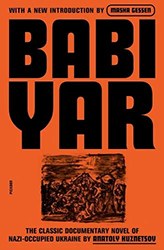Between the Wires tells for the first time the history of the Janowska camp in Lviv, Ukraine. Located in a city with the third-largest ghetto in Nazi-occupied Europe, Janowska remains one of the least-known sites of the Holocaust, despite being one of the deadliest. Simultaneously a prison, a slave labor camp, a transit camp to the gas chambers, and an extermination site, this hybrid camp played a complex role in the Holocaust.
Based on extensive archival research, Between the Wires explores the evolution and the connection to Lviv of this rare urban camp. Waitman Wade Beorn reveals the exceptional brutality of the SS staff alongside an almost unimaginable will to survive among prisoners facing horrendous suffering, whose resistance included an armed uprising. This integrated chronicle of perpetrators, victims, and bystanders follows the history of the camp into the postwar era, including attempts to bring its criminals to justice.

Between the Wires: The Janowska Camp and the Holocaust in Lviv
Discussion Questions
In his meticulously researched Between the Wires, Waitman Wade Beorn introduces readers to the relatively unknown camp of Janowska. Beorn’s is the first extensive study of this deadly site located in Lviv (today in Ukraine), a city with the third largest ghetto in Nazi-occupied Europe. Simultaneously a slave labor camp, extermination site, transit camp, and prison, Janowska is crucial for understanding the unique and unusual history of urban camps, the role of hybrid camps in the murder of Europe’s Jews and other Nazi victims, and the geopolitical importance of what is now Ukraine in the history of the Holocaust.
Between 1941 and 1944, the Janowska camp was the site of the mass murder of up to eighty thousand people, and Beorn painstakingly reconstructs the atrocious horrors that took place there — no small feat given how little research has previously been done. Using extensive archival research, he narrates the camp’s history into and through the post war period and offers integrated portraits of Janowska’s victims, perpetrators, and bystanders. Though the book tells a story that is painful to grapple with, it is essential reading if we are to understand the full history of the Holocaust.

Help support the Jewish Book Council.



